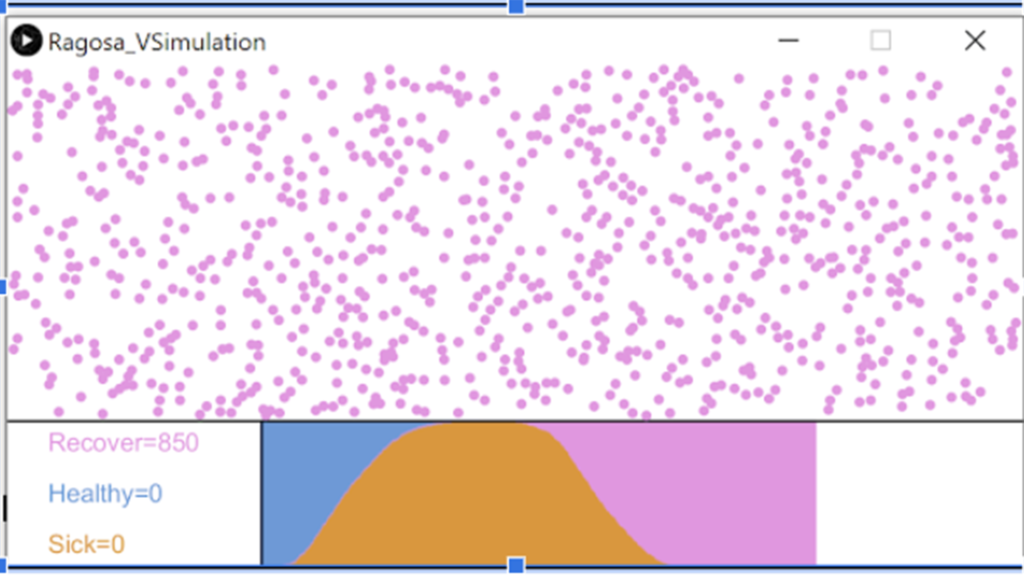Computer science students create data visualizations to share critical information about COVID-19
By Bryan Hay
Right after the transition to online classes this spring, Christian López, assistant professor of computer science, challenged students in his Introduction to Programming class to design simulations that illustrate the importance of social distancing to slow the spread of COVID-19.
Some of the student learning outcomes for this class are to create and evaluate descriptions and representations of scientific data, as well as to design, implement, and evaluate computing-based solutions.
“So I created a couple of videos, and, as an assignment, asked the students to recreate a virus spread simulation from The Washington Post,” López says. “It’s a very effective way to use and understand data visualizations and programming constructs, while at the same time bring about a heightened awareness of the importance of social distancing.”
His students were tasked to build two scenarios—one showing how social distancing slows the spread of the disease, the other showing a rise in the number of sick people when a group fails to follow social distancing practices.
“Some of my students did say it was kind of a very challenging assignment because of its complexity,” López says. “But they appreciated how critical it is to have this type of information right now.”

Christian López’s computer science students created data visualizations to illustrate the importance of social distancing.
His students expressed how the assigned raised their awareness of social distancing as a proven way to curb the spread of the novel coronavirus.
Andrew Gershon ’23 said he enjoyed the challenges presented in CS104 and the opportunity “to code something so informative and important.”
“Coding this simulation made me further understand the importance of social distancing,” said Khalid Al-Motaery ’23.
“I thought the assignment was really interesting as it shows just how important and necessary social distancing is to limiting the spread of coronavirus,” said Genevieve McClean ’23.
Similarly, López taught students in his Introduction to Machine Learning class how machine learning and artificial intelligence can and are being used to fight against the COVID-19 pandemic.
As part of this class, students learned how to build, train, and test a convolutional neural network, a machine learning method for image classification, to identify X-ray images of patients with COVID-19. “Several countries and hospitals are using very similar systems to the one the students developed, just a bit more complex and robust,” he says.
In addition to his work with students, López has been working with Caleb Gallemore, assistant professor of international affairs, to collect tweets related to the novel coronavirus pandemic. Millions of tweets from around the world and in multiple languages have been collected since Jan. 22, when total reported cases of COVID-19 stood at below 600.
Tweets about the pandemic carry opinions, information, and misinformation, a reflection of how people are responding to the crisis, their altered lives, and official directives. Their work in surveying real-time reaction to the crisis may be of interest to policymakers and elected officials as they consider ways to address the pandemic.
Read more about the project.
